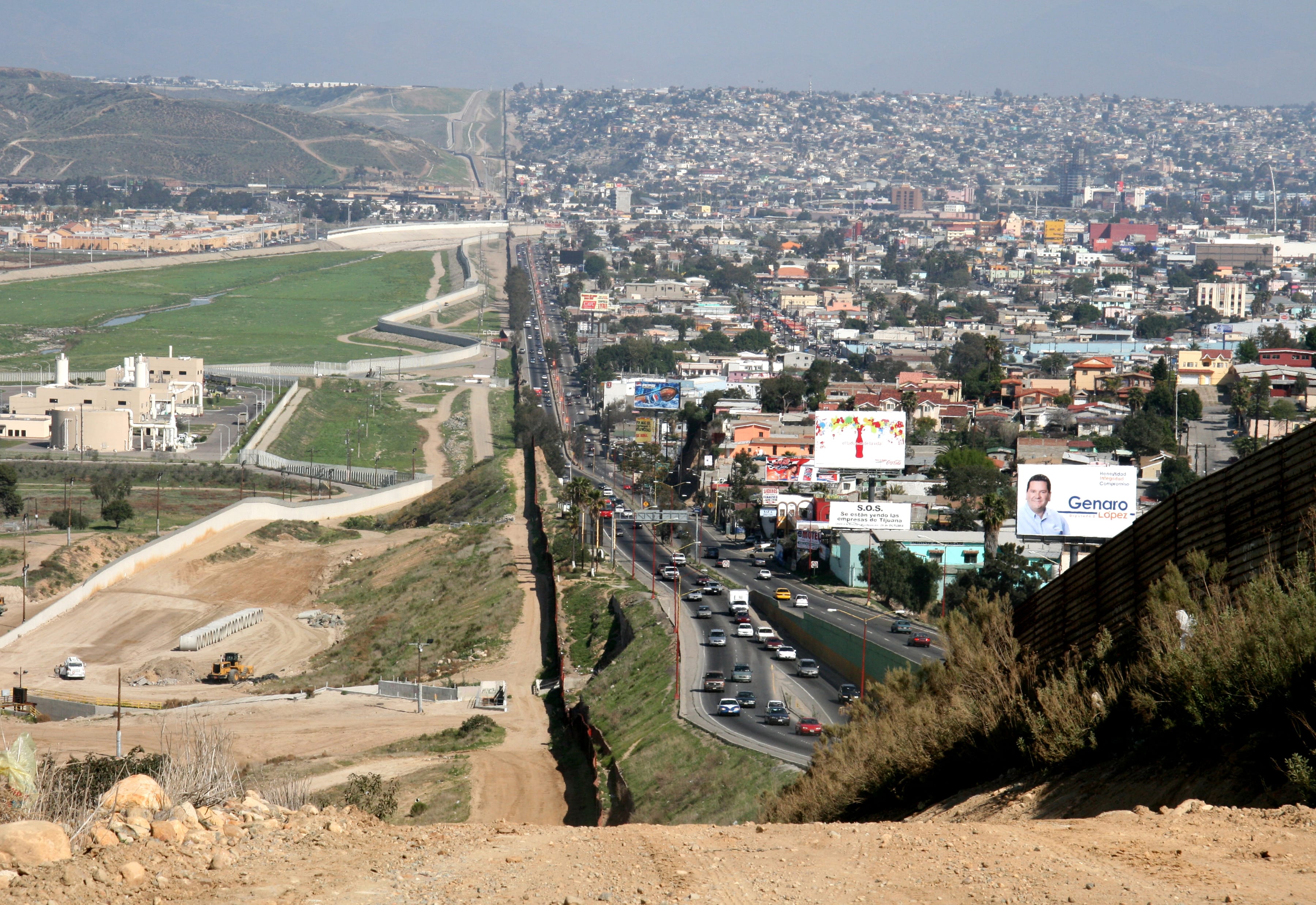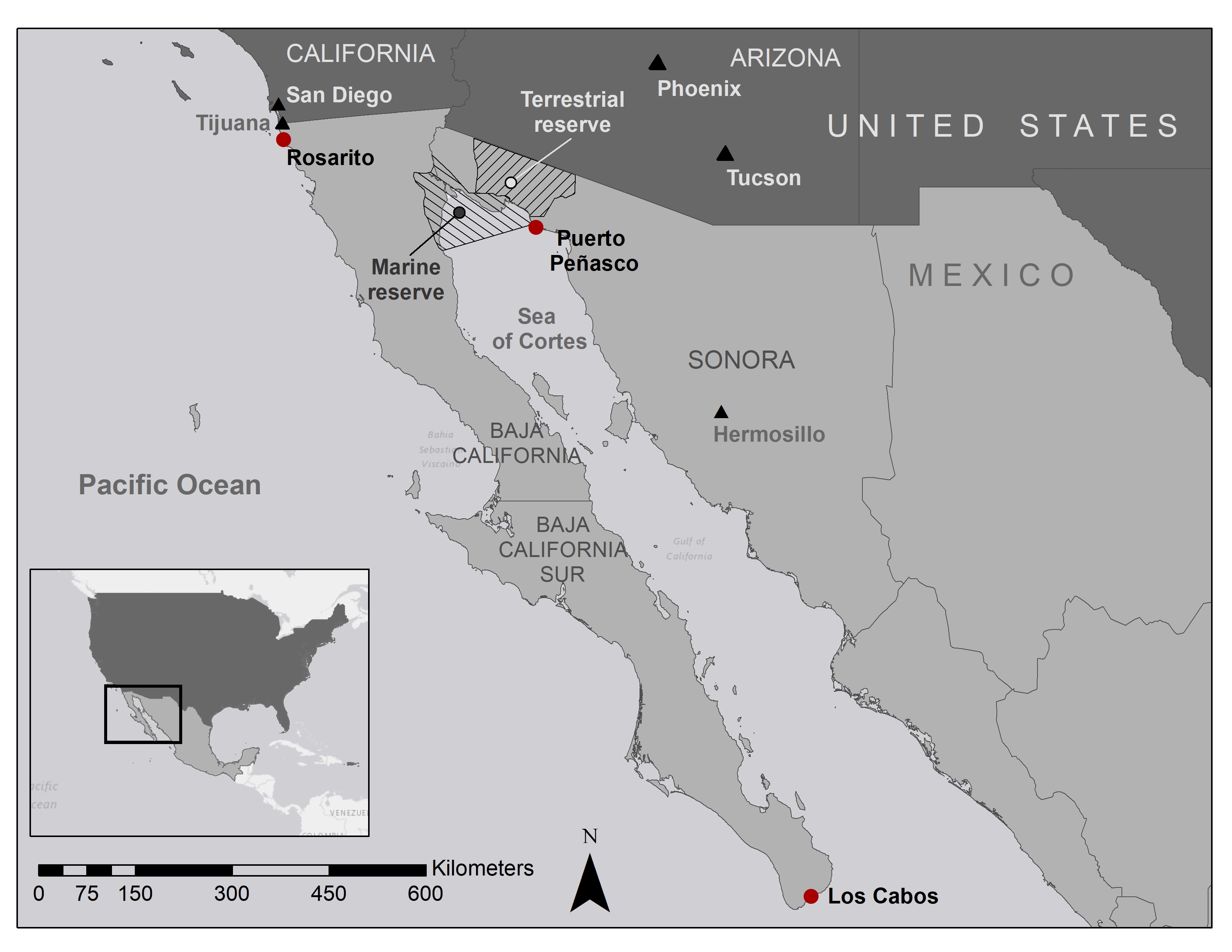
and to the left is San Isidro, California (Photo: Sgt. 1st Class Gordon Hyde
(http://www.ngb.army.mil) [Public domain], via Wikimedia Commons)
Could countries ever import and export desalinated water?
This is the question raised by Stephen Mumme, Jamie McEvoy, Nicolas Pineda and Margaret Wilder in their recent article (‘Shipping water across the U.S.-Mexico border: international governance dimensions of desalination for export’) published in Water International (2017).
Mumme, the lead author, is one of the foremost authorities on U.S.-Mexican border issues and Water International is one of the most prestigious journals related to water affairs. Although the question might be relevant to many countries, the authors pose it in relation to Mexico as the seller and the United States as the buyer.
The answer might seem simple in principle but, after reviewing the regulatory framework, it is, in practice, very complex. It is important to understand the water governance context for such exports. Water management in the U.S.-Mexico border region is part of a complex set of international, binational, and domestic governance arrangements that is best captured analytically as a multilevel governance system. Thus, exporting desalinated water from Mexico to the U.S. is far from being just a market decision; it is most of all an issue subject to normative, institutional, environmental and governance constraints.
Among the principal international agreements that may affect desalinated water export are the 1944 U.S.-Mexico Water Treaty, the 1983 La Paz Agreement, the Agreement Establishing a Border Environment Cooperation Commission (BECC) and the North American Development Bank (NADB), and the North American Free Trade Agreement (NAFTA), which has been at risk of cancellation since Donald Trump arrived in the White House. The Mexico–U.S. treaty water regime is the central institutional element governing water sharing across the international line.
Exporting water across the Mexico-U.S. border is not new – beverage trade is common, and Mexico legally exports millions of gallons of beer annually, and lesser amounts of soft drinks. As virtual water, those commodities drive binational agricultural trade. However, done in bulk, raw water exports remain controversial. As a rule, bulk-water exports are discouraged on account of their linkage to the bilateral treaty water regime and its strict enforcement of national treaty water entitlements. An alternative to exporting desalinated water is water swapping. This is not only feasible, but it is already contemplated under the International Boundary and Water Commission’s Minute 319, a 2012 agreement on cooperation in the Colorado River Basin.
National control over allocated water is jealously guarded in both countries due to the scarcity of treaty-allocated water resources in the border region. All water augmentation schemes are parsed through this lens and evaluated for their linkage to the treaty water regime. In the case of border groundwater, the key issue is whether the aquifer is hydrologically linked to the aquifer system supported by a treaty river. If so, the water is part of the treaty regime and subject to its rules and regulations. If not, that water may be considered a separate hydrological system whose development is not tied to the treaty regime and could be used to augment treaty-regulated supplies.
Another important consideration relates to environmental impacts. The treaty regime may apply and, at a minimum, each country is obligated to consult the other ‘prior to undertaking any new development’ of resources. In addition, desalinated bulk-water export is shaped by the La Paz Agreement which enfolds many potential desalination sites in Mexico’s border zone. The 1993 BECC, NADB, and the NAFTA agreements also play a role in the export of desalinated water and in monitoring environmental impacts in the North American region.

In sum, any project aimed at exporting desalinated water across the U.S.-Mexico border confronts a number of binational institutional considerations related to the water source and how it is used, as well as international arrangements bearing on the project’s development and operations.
In addition, the article also outlines the list of federal, state and local approvals and permits applicable to this kind of project. It looks at two desalinated-water-for-export schemes currently under consideration in the border region. One is the Rosarito-Otay project which links Rosarito, west of Tijuana, with the San Diego area and is currently nearing completion of the permitting process. The other is a project near Puerto Peñasco, which is now under consideration by Mexico and a consortium of water interests including the Central Arizona Water Project, that would link desalinated water with the Imperial Dam. It is less advanced but now under serious consideration. Both projects are seawater-sourced and may well be subject to the treaty water regime.
The authors conclude that while it is too early to draw definitive conclusions about how the production of desalinated water for export will affect governance institutions in this binational region, a key lesson we learn from this overview is that water scarcity is adding new players and interests to the governance mix. This in turn, is driving institutional adaptation by older institutions. That phenomenon deserves further assessment.
